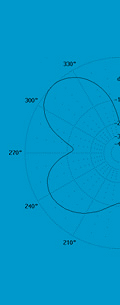 All materials on this site © PAR Electronics, Inc.
All materials on this site © PAR Electronics, Inc.
PAR Electronics, Inc.
P.O Box 645
Glenville, NC 28736
Voice: 828-743-1338
Fax: 866-304-8479
Email us if you have questions or comments about this site.
Site by
Pinnacle Web Design
Scanner Filters FAQ
- What is intermod?
- Intermodulation distortion, intermod or IM occurs in a receiver when the front end amplifying stages are forced to handle signals that are too strong for the capabilities of the amplifier. Typically, IM will manifest itself as signals showing up on frequencies other than where they were originally transmitted.
- Why are pager transmitters so often the cause of IM?
- Pagers often cause IM because:
- They run high power.
- They are often on the air ( high duty cycle)
- The frequencies they are assigned to
- What would be an example of intermod?
- 3rd order intermod (caused by 3 offending signals) is common.
Consider 3 paging transmitters on the following frequencies:
F1 = 152.480, F2 = 152.720, F3 = 157.120
The general 3rd order equation is Fim = F1 +/- F2 +/- F3
For our purposes, consider: Fim = F1 + F2 - F3 = 152.48 + 152.72 -157.12 = 305.12-157.12 = 147.0
So, the listener would hear paging modulation on not only just 147.0 but also +/- the modulating frequencies of the paging transmitters. If a 4th or 5th strong transmitter comes on the air while the first three are still transmitting, 4th and 5th order IM can occur - the result is a is a real mess. - Is it necessary to totally eliminate the offending transmitters?
- No. It is sufficient to reduce them in strength to a level that the receiver’s front end can again become linear.
- What other signals commonly cause IM?
- NOAA Weather in the 162 MHz region, commercial FM broadcast transmitters (88-108 MHz), VHF/UHF Television transmitters. AM radio stations can cause IM in the SW spectrum.
- What should I look for in a filter?
-
- Selectivity: If you need to attenuate a pager transmitter at 152.210 MHz, what will be the impact on reception at say, 154 MHz? Filter selectivity is often characterized by its –3dB frequencies points. For example, a notch filter whose center notch frequency is –152 MHz may have –3dB points of +/- 2.25 MHz. This may also be expressed as +/- 1.5% of center frequency. So, in this example the filter response will be down 3dB at 149.75MHz and 154.25MHz. 3dB will likely have no noticeable effect on reception.
- Notch depth. In real world filters, the deeper the notch,
the wider the +/- 3dB points.
It is difficult to generalize how deep a notch will be required to eliminate the IM. As the offenders are reduced by –3dB, the IM will go down by –6dB. Our filters generally provide a notch depth of –35dB. - Usable frequency range. An Ideal notch filter would be transparent (close to 0 dB loss) from zero frequency to infinite frequencies. In the real world this is not the case because of Stray capacitances, inductances and other parasitic effects. Our notch filters retain excellent low loss from DC to at least 1 GHz.
- Can filters of different frequencies be placed in series, or cascaded?
- Yes, the use of male and female BNC connectors makes this easy.
- Can identical filters be cascaded to achieve a deeper notch?
- Yes, with a qualifier. If the filters are directly cascaded, the resulting increase in notch depth will not be additive. That is, two –35dB filters directly cascaded may only increase notch depth by 6dB or so. The proper method of accomplishing this would be to connect the filters together with a coaxial jumper whose length is ¼ of an electrical wavelength. This takes into account the velocity factor of the coaxial cable- contact us if you have questions on how to make up such a cable. With that said, it would be unusual to require such a deep notch.
